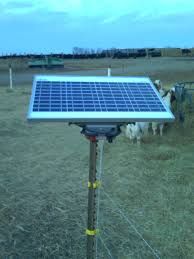https://www.moneycontrol.com/news/business/economy/opinion-how-the-govt-failed-to-shine-light-on-the-solar-sector-3461301.html
How the government muffed up on the solar front
Most state grids are near bankrupt and cannot pay for the ever-increasing subsidy amounts doled out. Once the elections are over, they will have no option but to stop these freebies.
RN Bhaskar – 31 January 2019
In mid January 2019, the Centre for Science and Environment published its annual report on the State of Renewable Energy in India (https://www.cseindia.org/state-of-renewable-energy-in-india-2019-9243). The report is a damning indictment of the government’s poor implementation of its own policies.
 Of notable interest is the statement (http://csestore.cse.org.in/files/index/download/id/1547812153/) “Although India has set itself a massive goal of 40 GW of solar rooftop by 2022, only 3.4 GW had been installed till September 2018 — most of it by commercial and industrial customers, as the government has not promoted it with the right set of policies.”
Of notable interest is the statement (http://csestore.cse.org.in/files/index/download/id/1547812153/) “Although India has set itself a massive goal of 40 GW of solar rooftop by 2022, only 3.4 GW had been installed till September 2018 — most of it by commercial and industrial customers, as the government has not promoted it with the right set of policies.”
What the report is talking about is the government’s own implementation schedule (see table). This schedule was proudly disclosed by Upendra Tripathy, then secretary, MNRE in the power ministry (http://www.asiaconverge.com/2016/06/solar-power-the-agony-and-the-ecstacy/). He was quite confident that the government would be able to meet the targets.
Two and a half years later, it is quite clear that of the 6 GW that were to have been installed, only 3.4 GW have actually been implemented.
The reasons are many. Primary among them is the ministry’s sheer inability to get local state-owned grids to push Rooftop Solar Power. The state grids were reluctant to lose their prime customers (industry and business establishments) from opting for solar power. Some state government even slapped additional stand-by power charges on parties that installed solar power panels on their rooftops.
This was because solar power can be generated at less than Rs.3 per unit (kWh) against the tariff of Rs.8-14 that state governments charge for various types of industry and businesses. Display advertisements and shopping malls pay the highest slabs in most states. While the willingness to opt for solar power by large industries was flagging five years ago, the mood has changed since then. This is because of batteries becoming both cheaper and increasingly popular (https://www.moneycontrol.com/news/india/opinion-govt-missing-the-big-picture-in-its-electric-vehicle-policy-3332341.html).
Batteries are crucial to the success of solar power because extracting power from the sun can be an intermittent affair. A fleck of cloud over the sun would cause power generation to flag. Industry needs good quality stable power supply. But with batteries becoming cheap, this intermittent power could be stored in a battery which would allow for a steady stream of good,quality and reliable power supply.
Once that happens, state grids will begin to lose the best paying customers, thus further straining budgets of state governments which have generously and foolishly allowed power subsidies to be doled out. In the past, the higher paying customers (including ordinary customers who pay around Rs.6-8 per unit of power) helped state governments subsidise power to farmers. They also subsidised power theft which (in many cases) was covered up by showing it as agricultural consumption. Solar power is the biggest threat to all this (http://www.moneycontrol.com/news/business/dear-pm-modi-heres-how-bureaucrats-are-planning-to-scuttle-your-rooftop-solar-employment-plans-2468501.html).
That could explain why the central government still insists on charging a 25% safeguard (import) duty on solar panels and an 18% GST on batteries in India (down from 28% that was charged earlier — https://www.moneycontrol.com/news/business/economy/opinion-brace-yourself-for-an-economic-slowdown-3401971.html). If solar power helps reduce imported fuel bills, there is no justification for the high import duties and GST levies.
At the same time, there is no denying that solar power is the best solution for far-flung villages. Decentralised solar power generation and distribution facilities are needed there. One of the reasons why decentralised grids work is because the distance between the power generation source (the rooftop) and the consumption destination is short. The longer the transmission lines, the greater the losses (and the theft potential). State governments are reluctant to accept the changed environment.
That could also explain why the government could not meet its rooftop solar targets.
But there is reason to feel optimistic. Most state grids are near to bankruptcy. They cannot pay for the ever-increasing subsidy amounts doled out. State power generation stations are nursing a pile of debt (https://www.moneycontrol.com/news/business/opinion-strained-finances-of-stressed-thermal-assets-wholl-bell-the-cat-3218511.html). They are reaching breaking point. They are further burdened by the electoral compulsions of providing (free) power to all.
Once the elections are over, they will have no option but to stop these freebies. They won’t even have money to buy power from Independent Power Producers (IPPs) or even NTPC. State owned power stations may not have money for coal. That is when plant shutdowns will begin. To deflect criticism, state governments may give away clusters to the power sector to provide decentralised rooftop power.
That is when there is hope that the Indian power sector will change. Meanwhile the clock continues ticking.










































COMMENTS